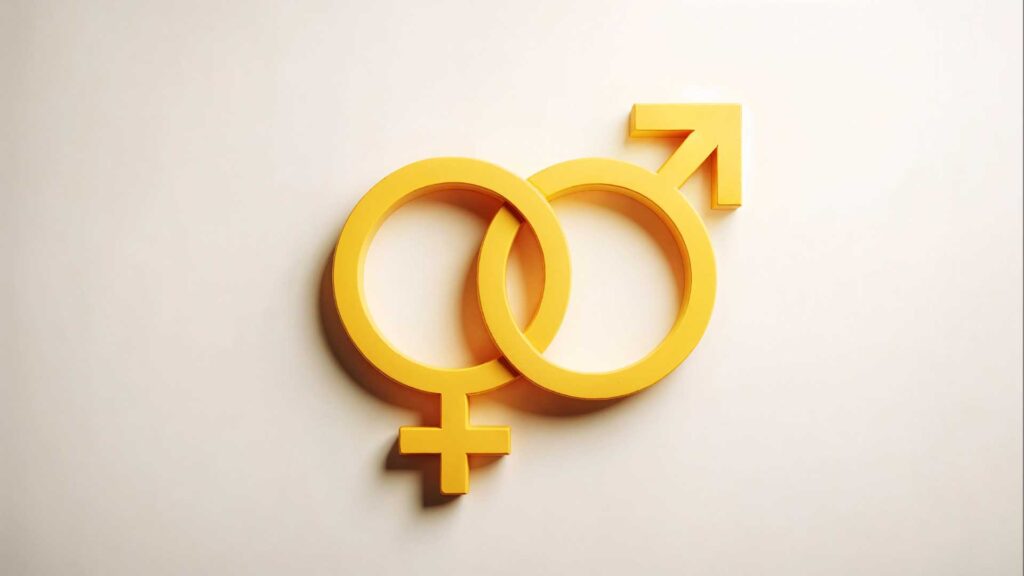
Gender Differences in Communication
Understanding gender differences in communication is crucial for fostering effective interactions in various settings, including the workplace, personal relationships, and multicultural environments.
As a provider of communications consulting services, we put this post together to explore how gender affects communication styles, highlighting both verbal and nonverbal differences, and offer strategies for bridging communication gaps. By delving into the nuances of gender communication differences, we aim to provide a comprehensive overview that will help readers navigate and improve their communication skills.
The Basics of Gender Differences in Communication
Gender communication differences are influenced by a combination of biological, psychological, and sociocultural factors. These differences begin early in life and are reinforced through socialization processes.
Biological and Sociocultural Influences
Biological factors, such as hormonal differences, can impact communication styles. For instance, testosterone is often associated with dominance and aggression, which may influence more assertive communication styles in men. Conversely, estrogen is linked to nurturing behaviors, potentially contributing to more collaborative communication styles in women.
Sociocultural influences also play a significant role. From a young age, children are socialized into gender roles that dictate acceptable behaviors and communication patterns. Boys are often encouraged to be assertive and competitive, while girls are taught to be nurturing and cooperative. These early experiences shape communication styles that persist into adulthood.
Verbal Communication Differences
Verbal communication styles between men and women often differ significantly, affecting how messages are delivered and received.
Men’s Verbal Communication Styles
Men typically use direct and assertive communication. They are more likely to state their opinions boldly and engage in competitive dialogue. This style is often used to assert dominance and control in conversations. Men are also more prone to interrupting others and steering conversations toward their preferred topics.
For example, in a professional setting, men might interrupt a meeting to assert their point of view or challenge a colleague’s opinion. This can be perceived as confident and authoritative but may also be seen as domineering if not balanced with active listening.
Women’s Verbal Communication Styles
In contrast, women often use indirect and collaborative communication. They tend to focus on building relationships and showing support through their language. Women are more likely to use qualifiers and tag questions (e.g., “Isn’t it?”) to seek agreement and ensure inclusivity in conversations. Women often use upspeak which is the practice of taking a sentence that is not a question and turning it into a question. The inflection at the end of the sentence goes up- hence the term “upspeak.”
In the workplace, women might facilitate discussions by encouraging input from all team members and validating others’ contributions. This approach fosters a collaborative environment but may sometimes be misinterpreted as a lack of assertiveness.
Nonverbal Communication Differences
Nonverbal cues are a critical aspect of communication and can vary significantly between genders.
Men’s Nonverbal Communication
Men often use body language to assert power and control. This includes taking up more physical space, making direct eye contact, and using gestures that convey dominance. Men are also more likely to mask their emotions, maintaining a stoic demeanor to project authority.
For instance, in a business meeting, a man might use broad gestures and maintain a firm posture to command attention and convey confidence. This nonverbal behavior reinforces their verbal communication and strengthens their perceived authority.
Women’s Nonverbal Communication
Women, on the other hand, tend to be more expressive with their nonverbal cues. They use facial expressions, gestures, and body language to convey emotions and build rapport. Women are generally better at reading nonverbal cues and interpreting the emotional states of others.
In a social setting, a woman might use a warm smile, nodding, and open body language to show empathy and understanding. These nonverbal signals enhance verbal communication and help establish a connection with others.
Communication in the Workplace
How gender affects communication in the workplace can lead to misunderstandings and conflicts if not properly managed.
Challenges of Gender Communication in Professional Settings
Differences in communication styles can create friction in professional environments. Men’s direct approach may be perceived as aggressive, while women’s collaborative style might be seen as indecisive. These perceptions can hinder teamwork and affect career advancement.
For example, a female manager who uses a nurturing approach might struggle to assert authority in a male-dominated environment. Conversely, a male employee who prefers direct communication may unintentionally alienate colleagues who value a more inclusive approach.
Strategies for Improving Gender Communication at Work
- Active Listening and Empathy
- Encourage employees to practice active listening by giving full attention to the speaker and acknowledging their points. This fosters mutual respect and understanding.
- Genderflexing
- This involves adapting communication styles to fit the context temporarily. For instance, a woman might adopt a more direct approach in a high-stakes negotiation, while a man might use more inclusive language in team meetings.
- Creating Inclusive Environments
- Promote a culture that values diverse communication styles. Training programs can raise awareness about gender communication differences and teach strategies for effective interaction.
Impact of Gender Communication Differences in Personal Relationships
Gender communication differences also significantly impact personal relationships, often leading to misunderstandings.
Common Misunderstandings
Differences in how men and women express and interpret emotions can lead to conflicts. Men often focus on problem-solving, while women seek emotional support through conversation. This mismatch can cause frustration and feelings of being unheard.
For example, when a woman shares a problem, she might be looking for empathy and validation. However, a man might respond with practical advice, which can make her feel that her emotions are being dismissed.
Strategies for Better Communication
- Encouraging Open Dialogue
- Partners should discuss their communication preferences and needs openly. Understanding each other’s styles can help in adjusting communication to meet both partners’ expectations.
- Emotional Intelligence
- Developing emotional intelligence involves recognizing and managing one’s own emotions and being attuned to others’ feelings. This skill is crucial for improving communication and reducing conflicts.
- Active Listening
- Practice active listening by giving full attention, showing empathy, and refraining from interrupting. This helps in understanding the speaker’s perspective and responding appropriately.
Cultural Influences on Gender Communication
Cultural norms and values significantly influence gender communication styles, adding another layer of complexity.
How Culture Shapes Communication Styles
Different cultures have distinct expectations for gender roles, which shape how men and women communicate. In some cultures, assertiveness and directness are valued traits in men, while women are expected to be more reserved and nurturing.
For example, in many Western cultures, assertiveness is prized in leadership roles, leading men to adopt a more dominant communication style. In contrast, many Asian cultures value harmony and collective well-being, encouraging women to use more conciliatory language.
Adapting to Multicultural Environments
- Cultural Sensitivity and Awareness
- Understanding cultural norms and values is crucial for effective communication in diverse environments. Training programs can help individuals develop cultural competence.
- Respecting Diverse Communication Styles
- Encourage an inclusive atmosphere where different communication styles are respected and valued. This involves being open to learning from others and adapting one’s approach when necessary.
Understanding gender differences in communication is essential for fostering effective interactions in both professional and personal contexts. While men and women may have distinct communication styles, recognizing and respecting these differences can lead to more harmonious and productive relationships. And it is important to note that all people have their own unique style of communication so it is dangerous to make broad assumptions.
We need to apply strategies such as active listening, emotional intelligence, and cultural sensitivity, individuals to bridge communication gaps and enhance interactions. Embracing how gender affects communication will ultimately lead to more inclusive and effective communication in all areas of life.
Cynthia Kay founded Cynthia Kay and Company media production 35 years ago. The company produces communications for organizations from Fortune Global 100 to small businesses. A graduate of Michigan State University, Kay holds a master’s in communications from Western Michigan University.
She is the Past Board Chair of the Small Business Association of Michigan (SBAM) and the National Small Business Association (NSBA). Cynthia has been honored with many awards including numerous Tellys and Woman Owned Small Business Supplier of the Year from Siemens in 2018. She has been named One of West Michigan’s 50 Most Influential Women 5 times. She is also the recipient of over 30 broadcast awards from UPI, AP and other news organizations.



